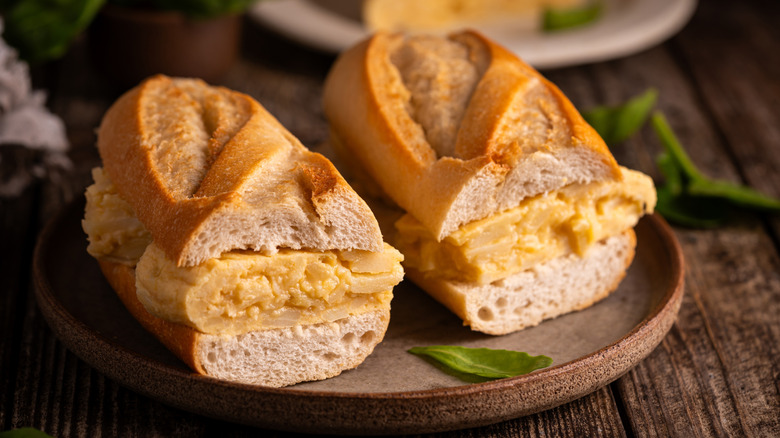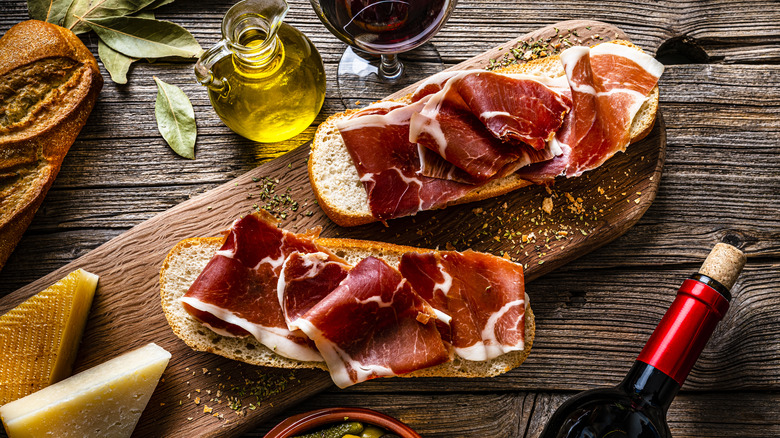Why Spain's Bocadillo Isn't Just Another Sandwich
Spain is, undoubtedly, one of the giants of international cuisine, known for exports like the cold and refreshing watermelon and tomato gazpacho soup. Spanish paella is so world-renowned it made it onto Food Republic's 22 most influential international dishes of all time. But the bocadillo, while ubiquitous in bars and food counters throughout Spain — and a near-daily staple for many of its residents — isn't quite as well known.
The customary bocadillo (or bocata) starts with a crusty barra de pan bread, similar to a baguette. The loaf is cut in half and filled with, usually, just one or two ingredients. The bocadillo is loved for its simplicity and convenience, a quick and nourishing, rough and ready meal. The other kind of sandwich, the one made with two pieces of sliced bread, is called el sándwich in Spain. This style is usually much more elaborate: mayo, lettuce and tomato, olive tapenade, or sometimes pressed with melted cheese and other ingredients.
While el sándwich is served at a full-service restaurant, the bocadillo is made to be eaten on-the-go or as a quick bite with a newspaper (or smartphone) at the local cafe or lunch counter. They're cheap and easy to make at home and travel well on a daily commute — or saved for a simple picnic or a quick break from sightseeing. With no messy oils or damp veggies, cleanup is simple, just brush away the crumbs.
What's in a bocadillo?
Spain is a country of many cultures, so the standard bocadillo will often be different from region to region, but one of the most common is made with tortilla española or Spanish omelet. Spanish tortilla is similar to a frittata — made with eggs, onion, and potatoes — and perfect on a bocadillo, either hot or at room temperature. The crunch of the barra de pan into soft egg and potato is pure pleasure. However, while quick and easy, this one can be a little more difficult to eat on the go.
For an ideal traveling bocadillo, all you need is a little Serrano ham and Manchego cheese. With only dry ingredients, this one stays together easily but still offers a nice textural contrast. For even more flavor, the inside of the bread is often rubbed with sliced tomato and raw garlic. Simply rubbing the ingredients on the crusty barra de pan, rather than spreading a full sauce, allows the bread to soak them up and adds a wonderful chew. If you want to get truly fancy, sub the Serrano with jamón Ibérico, often considered the best ham because it comes from purebred pigs fed a very particular diet.
On the seafood side of things, canned or jarred sardines and tuna are also common on bocadillos, whether simply on their own or with pickled peppers. And for outstanding flavor, Spain and Portugal have the best tinned tuna around. It's so good, in fact, that it doesn't need all the added accoutrements that often come with a sandwich on sliced bread. So, think about making it a bocadillo — the perfect simple and tasty, on-the-go meal.


